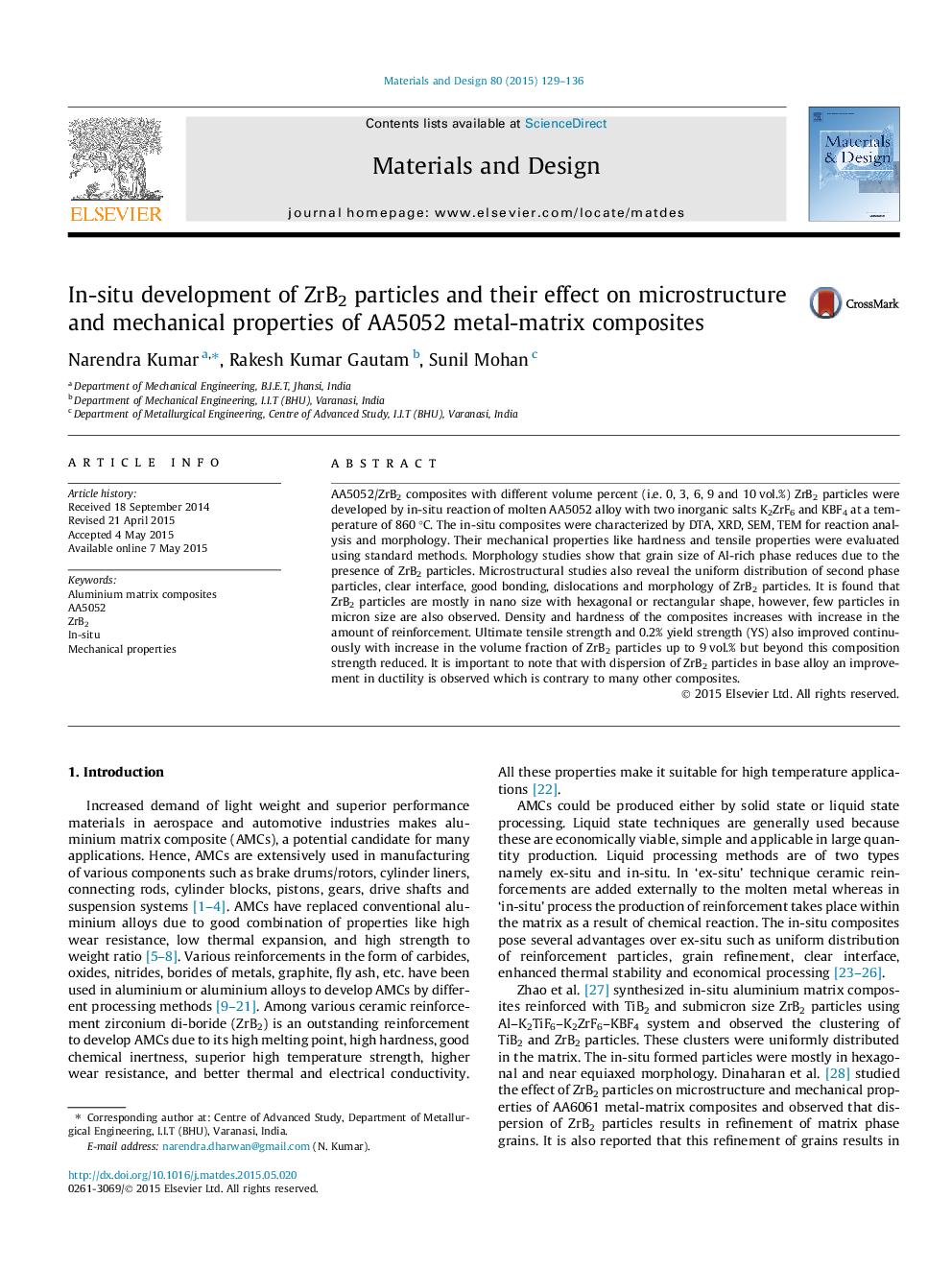| Article ID | Journal | Published Year | Pages | File Type |
|---|---|---|---|---|
| 828537 | Materials & Design (1980-2015) | 2015 | 8 Pages |
•The refinement of aluminium matrix takes place on in-situ formation of ZrB2 particles.•TEM studies reveal clear interface and good bonding between matrix and nano size ZrB2 particles.•UTS and 0.2% YS improve up to 9 vol.% ZrB2 but beyond it both are deteriorated.•All composites exhibit better ductility as compared to base alloy.
AA5052/ZrB2 composites with different volume percent (i.e. 0, 3, 6, 9 and 10 vol.%) ZrB2 particles were developed by in-situ reaction of molten AA5052 alloy with two inorganic salts K2ZrF6 and KBF4 at a temperature of 860 °C. The in-situ composites were characterized by DTA, XRD, SEM, TEM for reaction analysis and morphology. Their mechanical properties like hardness and tensile properties were evaluated using standard methods. Morphology studies show that grain size of Al-rich phase reduces due to the presence of ZrB2 particles. Microstructural studies also reveal the uniform distribution of second phase particles, clear interface, good bonding, dislocations and morphology of ZrB2 particles. It is found that ZrB2 particles are mostly in nano size with hexagonal or rectangular shape, however, few particles in micron size are also observed. Density and hardness of the composites increases with increase in the amount of reinforcement. Ultimate tensile strength and 0.2% yield strength (YS) also improved continuously with increase in the volume fraction of ZrB2 particles up to 9 vol.% but beyond this composition strength reduced. It is important to note that with dispersion of ZrB2 particles in base alloy an improvement in ductility is observed which is contrary to many other composites.
Graphical abstractFigure optionsDownload full-size imageDownload as PowerPoint slide
